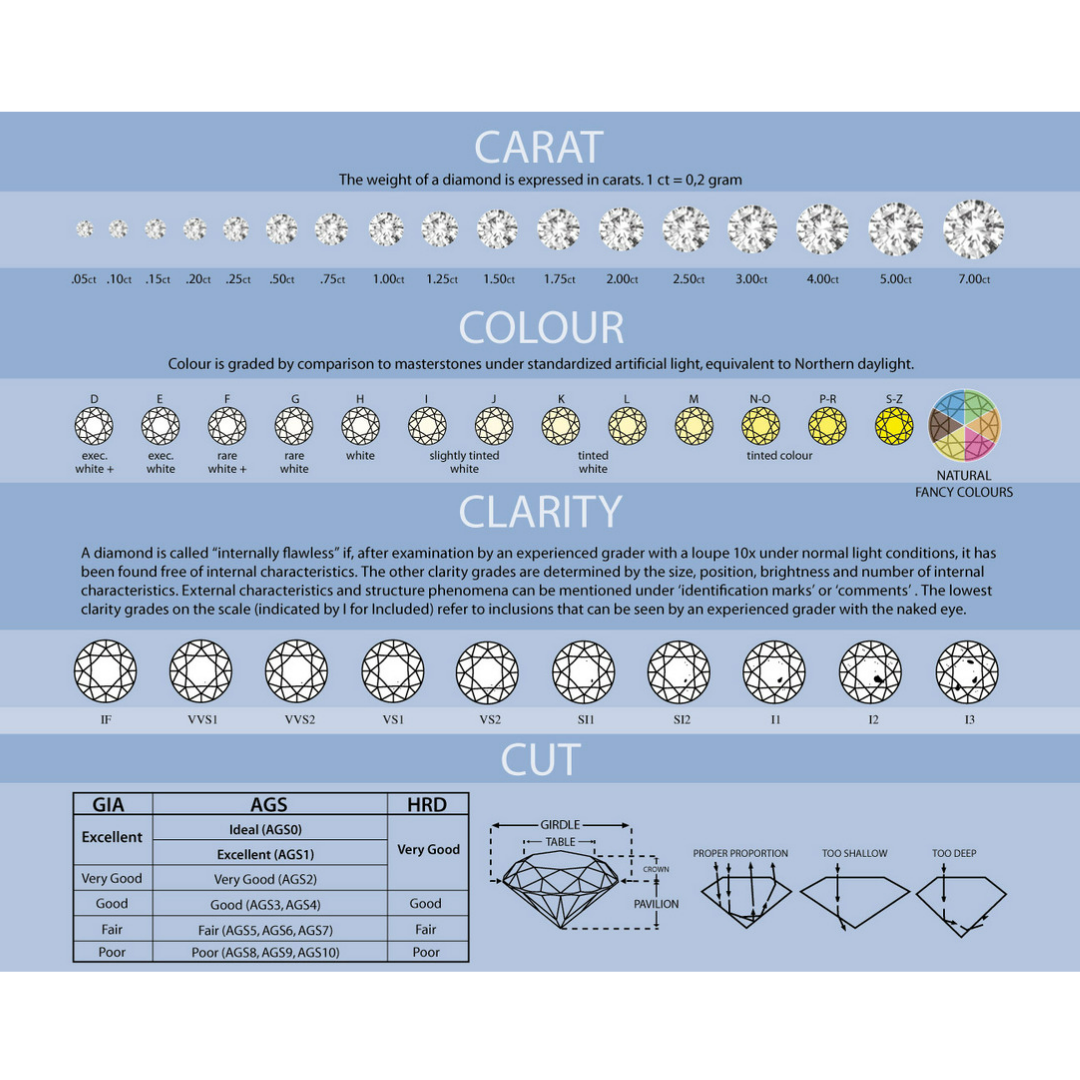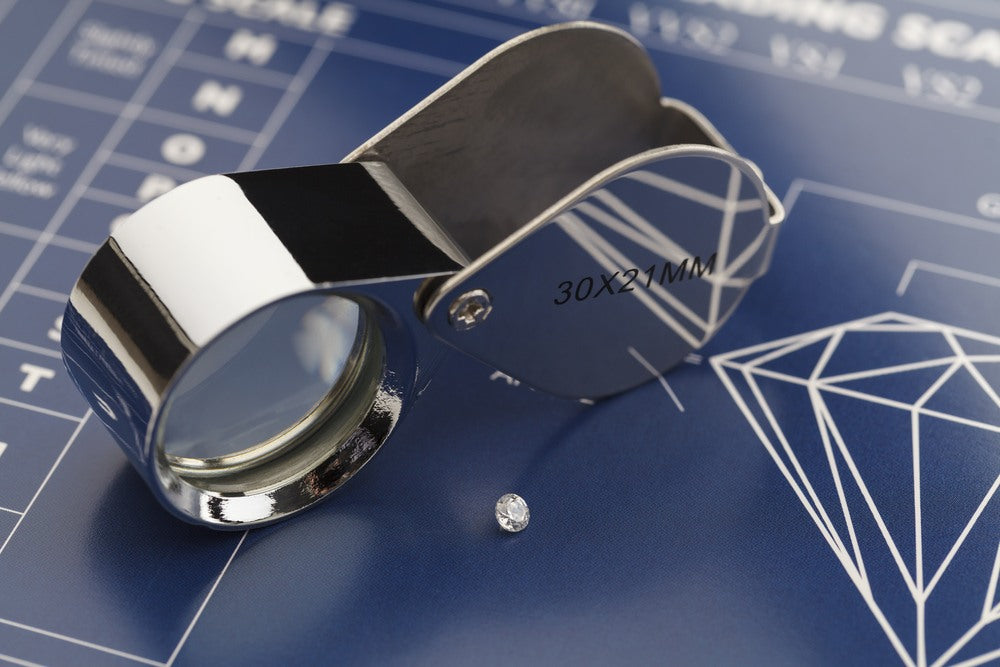Know Your Diamonds
Buying a diamond can be a daunting task, especially if you're not familiar with the nuances of the diamond market. However, with some education and research, you can become a knowledgeable and confident diamond buyer. Below, we'll explore the key factors to consider when buying a diamond, and provide tips on how to make an informed purchase, but always feel confident you'll get honest advise at Symmetry.

The 4 Cs of Diamonds
The 4 Cs of diamonds are the most important factors to consider when evaluating a diamond's quality and value. These are:
- Carat weight - refers to the size of the diamond, with one carat being equal to 0.2 grams. The higher the carat weight, the more valuable the diamond.
- Clarity - refers to the presence of internal or external flaws, called inclusions or blemishes, respectively. The fewer and less visible the flaws, the higher the clarity grade and value.
- Color - refers to the presence of any color in the diamond. The less color, the higher the color grade and value. The scale ranges from D (colorless) to Z (light yellow or brown).
- Cut - refers to the proportions, symmetry, and polish of the diamond. A well-cut diamond will have optimal light reflection and sparkle, making it more valuable.
Other Considerations
Certification
To ensure that you're getting a high-quality diamond, it's important to buy from a reputable seller and to ask for a diamond grading report from an independent third-party laboratory, such as the Gemological Institute of America (GIA) or the American Gem Society (AGS). These reports provide a detailed analysis of the diamond's 4 Cs and other characteristics, such as fluorescence and measurements, and serve as proof of the diamond's quality and authenticity.
Budget
Setting a budget is an important part of buying a diamond, as it can help you narrow down your options and avoid overspending. Keep in mind that the price of a diamond is influenced by its 4 Cs, as well as other factors such as shape, rarity, and demand. It's also important to consider any additional costs, such as taxes, shipping, and insurance, when calculating your budget.
Shape
Diamonds come in a variety of shapes, including round, princess, cushion, emerald, and pear, among others. The shape is a matter of personal preference, but it's worth noting that certain shapes, such as round, tend to be more popular and therefore more expensive.
Settings
The setting of a diamond can greatly impact its appearance and value. Some popular settings include prong, bezel, channel, and pavé. It's important to choose a setting that complements the diamond's shape and enhances its beauty, while also ensuring that it's secure and comfortable to wear.
Ethical Factors
Ethical considerations are becoming increasingly important for diamond buyers, as many consumers are now seeking to avoid diamonds that are associated with conflict or exploitation. One way to ensure that your diamond is ethically sourced is to look for diamonds that are certified as conflict-free by organizations such as the Kimberley Process Certification Scheme (KPCS) or the Responsible Jewelery Council (RJC).
Becoming an educated diamond buyer takes time and effort, but it's well worth it to ensure that you're getting a high-quality, authentic, and ethically sourced diamond. By considering the 4 Cs, certification, budget, shape, settings, and ethical considerations, you can make an informed and confident purchase that will last a lifetime.

